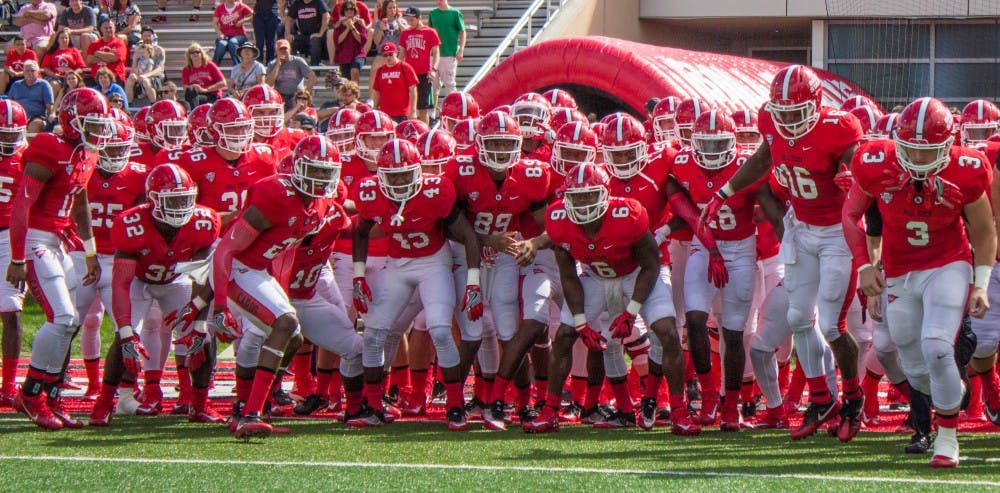Sept. 2 won’t be the first time Ball State and Illinois have played each other on the football field.
The first and only other meeting between the two teams came back on Oct. 29, 2007 when the Cardinals lost 28-17 under then head coach Brady Hoke.
After jumping out to an early 10-7 lead, Ball State couldn’t stop a strong second half, which included three touchdowns by the Fighting Illini offense.
There’s been a lot of things that have changed in the 10 years between the two contests within the Football Bowl Subdivision of the NCAA. Look at some of the biggest changes in Division l football as the Cardinals and the Fighting Illini prepare to meet in Champaign, Illinois once again.
1) New faces, new names
Both Ball State and Illinois rosters and coaching staffs look a lot different than they did 10 years ago.
The Cardinals and Fighting Illini have seen multiple coaching changes, with Ball State going from Brady Hoke, to Stan Parrish, to Pete Lembo with Mike Neu now at the helm. The Fighting Illini changes began with Ron Zook to Tim Beckman, with a couple of interim coaches in the mix, until Lovie Smith took over in 2016.
Offensive stars Juice Williams and Rashard Mendenhall led the Fighting Illini, while Nate Davis and his favorite options Dante Love and Darius Hill led the Cardinals' offensive attack.
2) Season schedules look a lot different
Nowadays, Mid-American Conference teams save most, if not all of their conference games for the back-end of the season.
During the 2006-07 season, Ball State’s ninth game of the season was against Illinois, followed by a game against in-state rival Indiana. The Cardinals also opened the season with games against MAC rivals Miami (Ohio) and Eastern Michigan.
Midweek #MACtion, while it was present, was also not as prevalent in 2007. Ball State only participated in two midweek games that season compared to five this year.
3) Conference layouts have changed
The MAC had the most members (13) out of any FBS conference, with Temple joining as an affiliate member in football until leaving in 2012.
During that time, the University of Massachusetts joined and left as an affiliate member from 2012-16. That season, the MAC was one of five conferences who held a conference championship game. Now, almost every conference has a conference championship game.
Since then, other conferences have been created and expanded upon their members. The Big East no longer exists (in football) and the American Athletic Conference has since been created. The Big Ten now has 14 teams and the Big 12 has 10, among some of the other changes.
4) FBS has grown
In 2007, there were 119 collegiate football programs in the FBS. Now there are 128, with others planning on joining in the upcoming years.
In the past 10 years, Charlotte, Appalachian State, Georgia State, UMass, South Alabama, Texas State, UTSA and Western Kentucky joined the FBS. The University of Alabama Birmingham disbanded its team in 2015 before being reinstated this year. Coastal Carolina and Liberty will join in 2018 and 2019, respectively.
The only program to leave during that period is Idaho, who will officially drop down to the Football Championship Subdivision in 2018.
5) Bowl games weren’t as plenty
Last season, there were 80 postseason bowl game berths, a number that has grown from 64 berths in 2007.
Usually, a college football team must win at least half of its regular season games (six) in order to be eligible for a bowl game, but several 5-7 teams appeared in postseason competition last year.
While numerous postseason bowl games have been added during that time span, there have also been a few defunct bowl games that have either been discontinued or moved. This includes the International Bowl (2006-09) which Ball State lost to Rutgers 52-30 on Jan. 5, 2008. The Poinsettia Bowl (2005-16) and Miami Beach Bowl (moved to Frisco, Texas) are among the list of defunct bowls during that period.
The College Football Playoff was also not yet created, meaning only the top two teams in the nation had a chance to compete for a shot at an NCAA Title.





